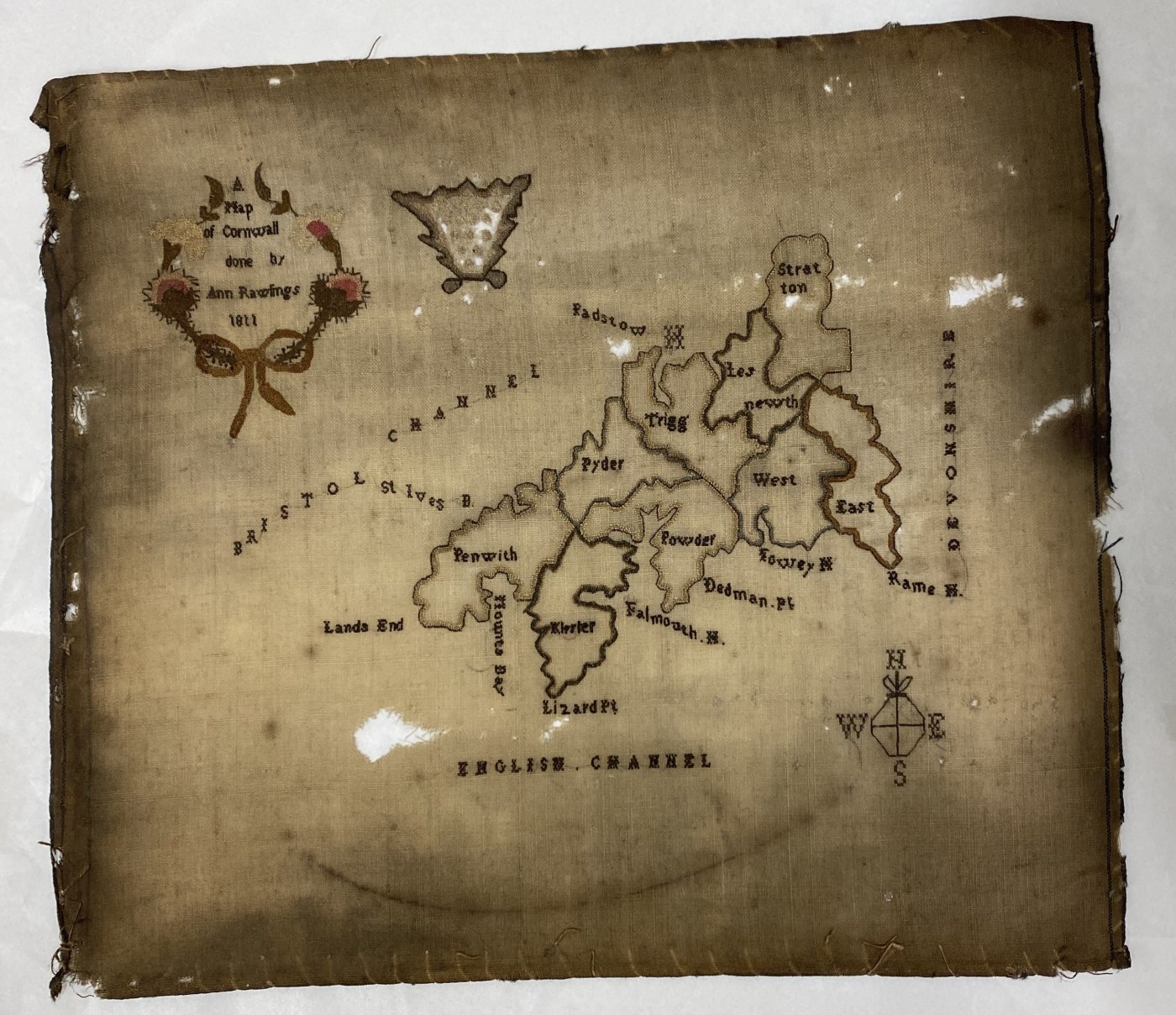- youtube
- bluesky
- Home
- About
- Costume Journal
- Membership
- Conference & Events
- Grants & Awards
- News & Social
MWEG 2022 recipient Jasmine Sewell shares her experiences working at the Royal Cornwall Museum (RCM)'s textile and dress collection.
I have always been interested in dress history; however, it wasn’t until the first year of my undergraduate degree that I realised I would love to pursue a career in this field.
During my final year studying for my BA Degree in Costume Design for Film and Television at Falmouth University, Cornwall, I was awarded the Costume Society’s Museum Work Experience Grant to complete a placement at the Royal Cornwall Museum (RCM). I initially began working with their Textile Collection in September 2022, however due to my final year workload I took a break from November 2022 until April 2023 when I began my work again.
Having previously completed an online Working with Museum Collections short course, undertaking this placement allowed me to apply what knowledge I had already gained to a physical museum collection and initially working alongside Jeni Woolcock, the Collections and Engagement Manager at RCM, also enhanced my learning throughout the placement.
RCM’s Textile and Dress Collection consists of a diverse array of textile items, such as samplers, bonnets, christening gowns, religious items, uniforms and more. My primary job was to photograph, and sometimes mount items in the collection, and whilst undertaking this task I would often discover items that were stored incorrectly or listed on Modes (the museum’s collection management software) in the wrong location. This meant that as well as photographing, I was also updating the storage methods and Modes information.
I worked systematically through the collection, printing off the Modes information relating to each storage box, and checking if this information matched the items inside the boxes, then photographing any items that did not have a corresponding photo on Modes. This job involved a bit of detective work as there were often mysterious items with no accession numbers, or accession numbers that, according to Modes, did not relate to the item labelled as such, so I would sometimes have to track them down on the Modes software using the accession number, location, or item description.
Throughout my experience at Royal Cornwall Museum, I photographed over 600 items: almost every item from the Textile Collection that was missing an image from the online Modes catalogue. This has helped to provide insight into the Textiles collection that had previously not been available for anyone wanting to know about the different objects.
I would like to thank the Costume Society, for providing me with this opportunity to work with a museum collection, and everyone at Royal Cornwall Museum, particularly Jeni and Emily who were always there to lend me a helping hand throughout my placement. This experience has been invaluably educational, and I have no doubt it will be incredibly helpful to me going forward with my career.
Excerpts from Jeni Woolcock, the Collections and Engagement Manager at RCM, report on Jasmine's placement:
"Costume and textile-based objects capture almost every facet of life – whether personal, social, economic or political. In recent years, RCM has identified and prioritised the need to develop women’s histories which can be drawn from the collections. The costume and textile objects at the museum are integral to that goal.
Prior to the MWEG project with Jasmine, many object records for the Textile and Costume Collection of the Royal Cornwall Museum held the bare minimum of detail, making curatorial work challenging. The Royal Institution of Cornwall, the charity that RCM operates as part of, is a 205-year-old organisation. It is hardly surprising, then, that the collections have a considerable backlog.
Jasmine’s work has exponentially improved both practical and curatorial aspects of collections management. We are now able to effectively work with the Textile and Costume Collection remotely (via the Collections Management System), and also build upon the current and potential understanding of the collection. Perhaps most crucially, visual digital access to the collections for staff means that we are better able to conserve the collection for the future – we can conduct much of our work without handling. Additionally, should the worst happen to items in the collection, it has been preserved by image capture."
If you are interested in learning more about applying for MWEG, please see our other reports and details on how to apply.
Image gallery

Waist-length dark ecru linen bodice with black braiding embroidered on to sleeve

Sampler, Map of Cornwall made by Ann Rawlings in 1811, in silk thread on fine linen.

19th century black petit point bag with satin gussets; fastened metallic and gold heart shaped clasp